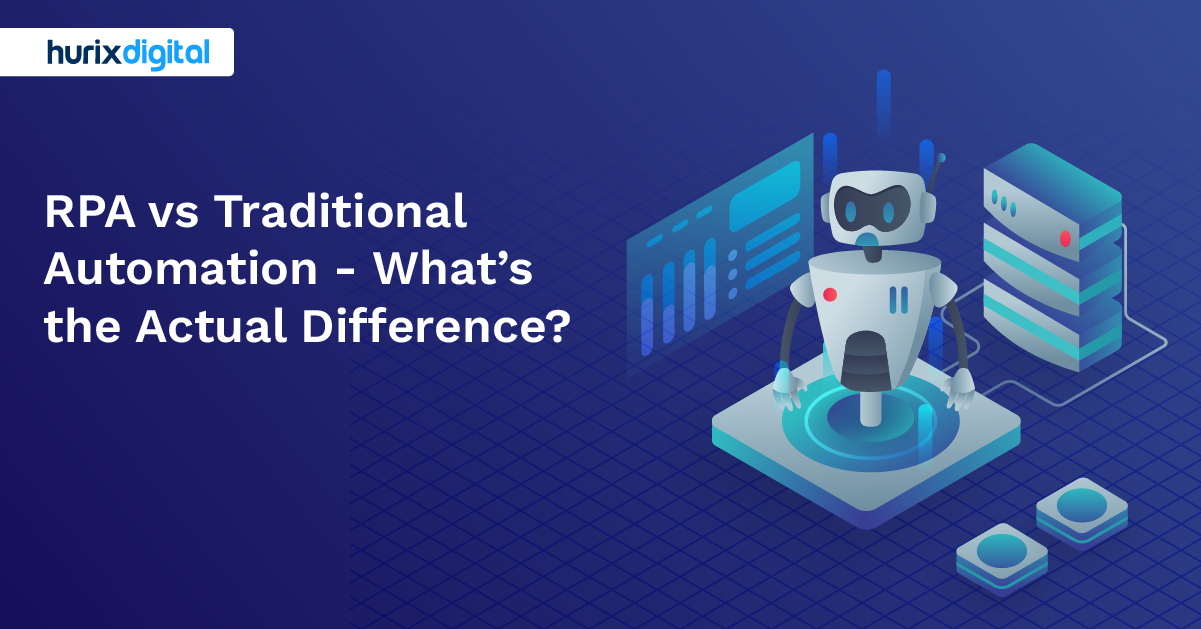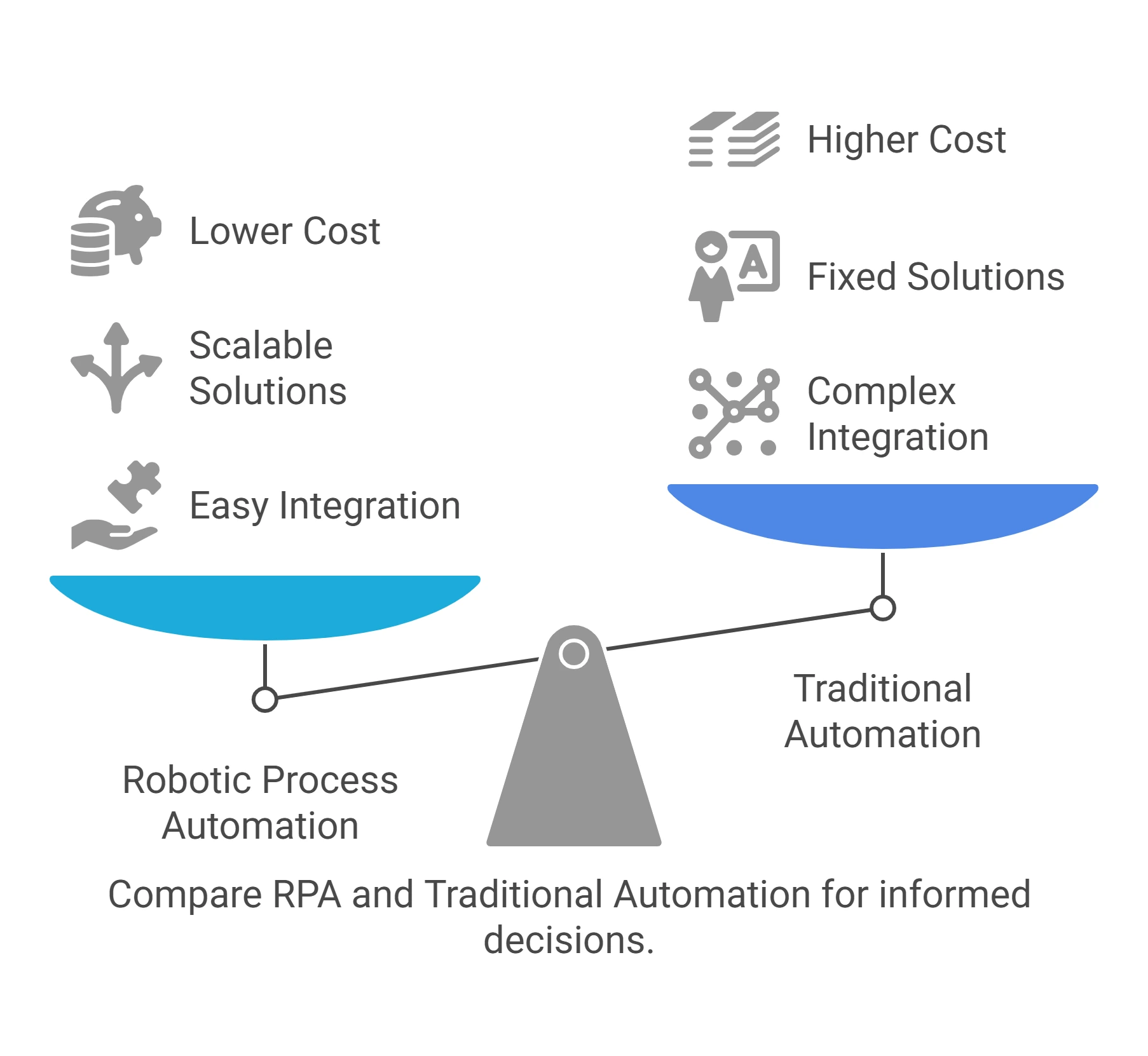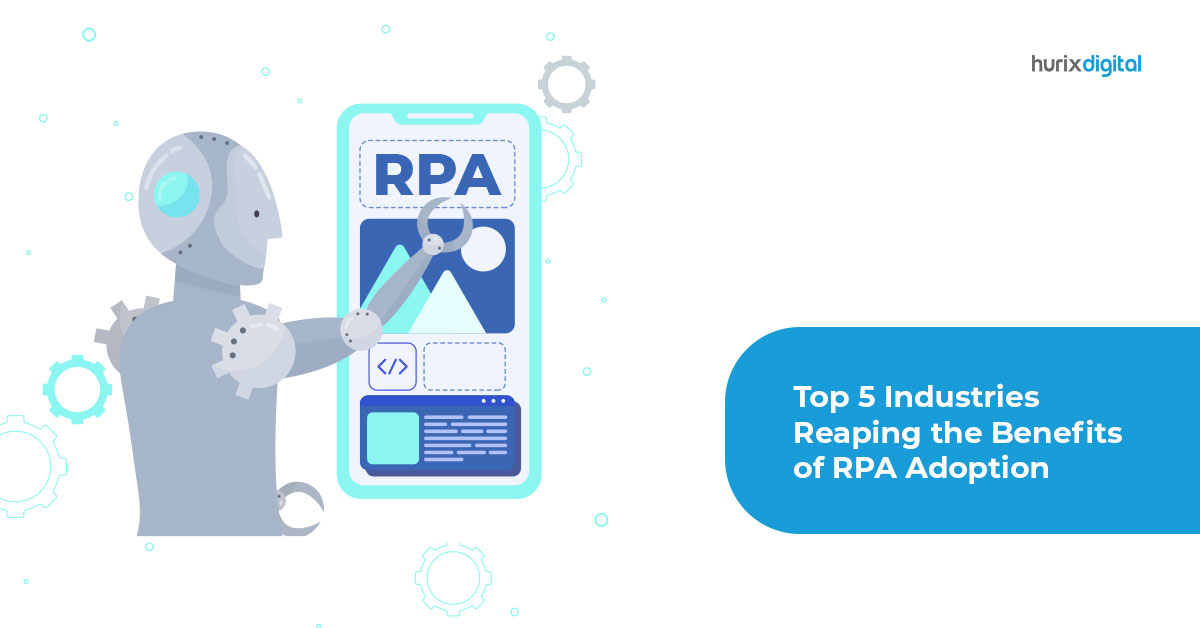
RPA vs Traditional Automation – What’s the Actual Difference?
Summary
Discover the key differences between RPA and traditional automation! This blog breaks down how Robotic Process Automation streamlines workflows, reduces manual effort, and enhances efficiency compared to conventional automation methods. Learn which approach best suits your business needs and maximizes productivity.
The market for robotic process automation is experiencing an unprecedented boom, given the conveniences and improvement in efficiency that it facilitates. According to a report by Polaris Market Research, the software automation tools would rise by a CAGR of 37.5% between 2023 and 2032.
But what is robotic process automation, and how does it differ from traditional automation?
Traditional automation allows for the execution of repetitive tasks based on a set of predetermined rules and instructions that are straightforward. You can think of it as writing a program that would follow your prescribed protocol when a set of conditions is met.
On the other hand, robotic process automation deals with the high volume of tasks that can be automated through:
- Determining complex algorithmic rules for tasks.
- Leveraging the power of artificial intelligence and machine learning to help the process improve itself.
- Delegating administrative and clerical tasks to intelligent software bots.
You can consider workflow automation as the next level improvement over traditional automation – a smarter, quicker method of automation that yields better results and has a wider scope of application.
Through this blog, you will learn the differences between robotic process automation and traditional automation.
Table of Contents:
- Understanding Traditional Automation and RPA
- Six Benefits of Robotic Process Automation
- Top 9 Major Differences Between Robotic Process Automation and Traditional Automation
- The Role of AI/ML in RPA
- Embracing the Future: Business Process Automation with RPA
- Conclusion
Understanding Traditional Automation and RPA
Before we dive into the intricacies of these automation methods, let’s briefly outline what they entail. Traditional automation uses rule-based algorithms and scripting to automate routine tasks. Companies have been employing this approach for a period, and many times it has demonstrated its usefulness. Using this approach increases efficiency and decreases errors in the process.
On the other hand, robotic process automation with automation goes to the next level by adding the power of RPA AI and ML utilizes software robots or “bots” to mimic human actions and interactions with digital systems. RPA with AI/ML allows bots to learn from specific patterns, adapt to changes, and make intelligent decisions based on data analysis.
Six Benefits of Robotic Process Automation
Let’s take a look at some of the most important benefits:
- Increased Productivity: RPA bots can work continuously, resulting in significant increases in speed and productivity.
- Reduced Errors: By minimizing manual intervention, RPA reduces the risk of human errors, leading to improved data accuracy and quality.
- Cost Savings: RPA eliminates the need for recurring and manual activities, allowing your resources to focus on other high-priority activities, ultimately reducing operating costs
- Scalability: Organizations can quickly adapt to changing workloads with RPA bots that can be easily scaled up or down based on demand.
- Compliance Improvement: RPA ensures compliance with defined rules and regulations, and minimizes compliance-related risks.
- Quick Implementation: RPA tools often come with user-friendly interfaces, enabling business users to create and deploy automation workflows with minimal coding knowledge.
Top 9 Major Differences Between Robotic Process Automation and Traditional Automation
Although RPA and traditional automation want to enhance performance they have fundamental distinctions. Standard process automation needs fixed scripting most when performing repetitive work with standard steps. RPA technology works through decisions and adaptations to handle process changes. RPA helps manage tasks that come with dynamic processes and ever-changing scenarios.
RPA deals with unstructured data and patterns to run cognitive-based processes perfectly. The set guidelines of traditional automation systems make them ill-equipped to perform these tasks.
1. Ease of Integration
Traditional automation methods demand activities to mesh with your current IT systems effectively. You have to build fresh network resources or create special interfaces to match their performance expectations.
Business process automation tools operate as advanced technology that links smoothly with existing systems. The automation tools easily adapt to your work processes without needing system modifications during implementation.
Newer and better RPA tools take less time to deploy in an existing system.
2. Ease of Scalability
Traditional automation systems are a string of programs written to allow for automated tasking across your existing IT infrastructure. In case your business is looking at scaling its operations up, you may be required to invest significant time and effort to rewrite these automation programs to span the new IT landscape.
On the other hand, robotic process automation tools are equipped with AI-based algorithms that adjust the automation scale based on your business’s requirements.
3. Implementation Timeline
While both kinds of automation implementations require some time to implement, implementing an RPA system is significantly faster than traditional automation.
This is because RPA tools sit on top of your existing systems, pulling and collating data from the departments necessary to execute the task at hand.
However, traditional automation systems require integration at the fabric level, requiring months to achieve implementation accompanied by feasibility studies for the right program design and other key aspects for bug-free automation.
4. Human Actions
Human actions show whether a program or algorithm can handle work in a way people would naturally do it.
Before autonomous work programs could begin cropped up the human had to determine how the equipment should operate first.
Current software bots can learn from human guidance because they use smart algorithms to replicate those instructions at task completion time. Programming algorithms can pick up human behavior through learning methods.
5. Customizations
With RPA tools, businesses get extreme customizability for a wide range of tasks across all business processes. You can create custom software bots to handle specific tasks and synchronize the output with the whole process within minutes.
On the other hand, traditional bots require APIs and programming to write code that controls their behavior. This limits the customizations that can be achieved within a certain time limit, and the input of resources would also be relatively higher.
6. Cost
Any new tool or tackle that is adopted in an organization comes with its associated costs and risks. When looking at RPA tools versus traditional automation, the upfront costs for RPA may be higher.
With that said, RPA doesn’t require much expense to operate. Once it has been configured and implemented, it saves an organization tremendous time and cost concerning human resources.
Traditional automation is easy to initiate, but the operational costs, time, and resources that it needs to remain operational are significantly higher.
7. Accuracy
Needless to say, RPA tools are more accurate than traditional automation. This is because the software bots handle most administrative, clerical, or repetitive tasks and leave little room for human error.
Traditional automation techniques are highly reliant on coding that humans have written. It is inevitable for a few errors to creep in and impact the output’s accuracy, preciseness, and efficiency as a result.
The element of AI and ML in RPA makes these systems more accurate.
8. Skill Level Requirements
Programming is not easy – and writing a program for business process automation most definitely requires a high level of coding skills.
Not all businesses today are willing to busy up their coding professionals for writing automation programs, especially when RPA tools are readily available for workflow automation.
The fact that implementing RPA tools does not require a high level of IT skills makes them extremely convenient to use straight off the shelf.
9. Infrastructure
Traditional automation is a technique that demands higher CPU and memory usage, given the bulk of its code. The more complicated an automation program gets, the more processing room it requires on infrastructure.
Businesses may need to invest in more machines if traditional automation requires scaling up.
On the other hand, RPA tools offer lightweight virtual software bots that do not block the CPU and memory by executing the tasks in a virtual space rather than requiring physical infrastructure.
The Role of AI/ML in RPA
Artificial intelligence and machine learning are critical in scaling RPA to new levels of robustness and intelligence. RPA vs AI is often a topic of discussion, but here’s where they work together seamlessly AI/ML algorithms empower RPA bots to learn from data, make data-driven decisions, and adapt to evolving situations. For instance, an RPA bot equipped with AI/ML capabilities can analyze historical data to predict potential bottlenecks, optimize workflows, and even suggest process improvements.
Embracing the Future: Business Process Automation with RPA
As businesses embark on the journey of digital transformation, the integration of RPA with AI and ML holds immense promise. RPA with AI and ML approach not only streamlines operations but also opens the door to innovation and strategic decision-making. By automating repetitive tasks organizations can allocate their time and resources, toward the priority tasks that contribute to growth and competitiveness, within the organization.
Conclusion
The movement from traditional automation systems into robotic process automation with AI/ML technology will help organizations boost their operations and enhance their intelligence. Robotic Process Automation can make automation better than just traditional process optimization. RPA with AI/ML tools learns from data to configure operations and generates insights from that data.
An organization progresses its digital transformation using RPA tools. Companies need to partner with automation professionals who have tested expertise in automation tools and methods for updating their systems.
Organizations like Hurix Digital lead this industry by supplying modern products for automated business workflows. Hurix brings automation professionals who develop solutions that help you achieve your targets. If you want automation services contact us today.
Start exploring transformational RPA capabilities and benefit from it today!

Currently serving as the Vice President of Technology Delivery Operations at HurixDigital, a prominent global provider of digital content and technology solutions for publishers, corporations, and educational institutions. With over 16 years of experience spanning EdTech and various domains, I hold certification as a SCRUM Product Owner (CSPO). My expertise includes operations, finance, and adept people management skills.









